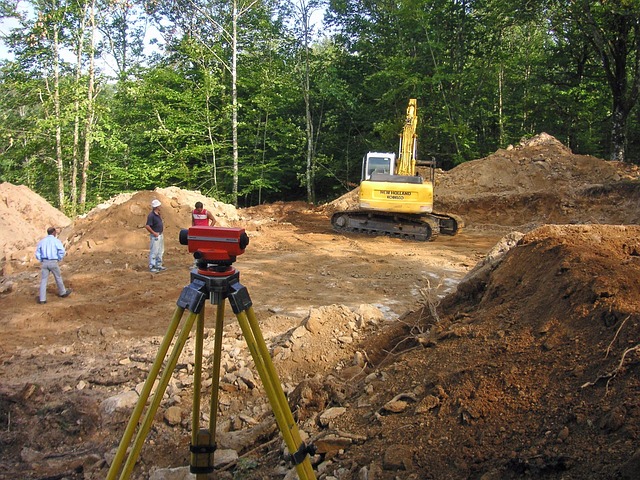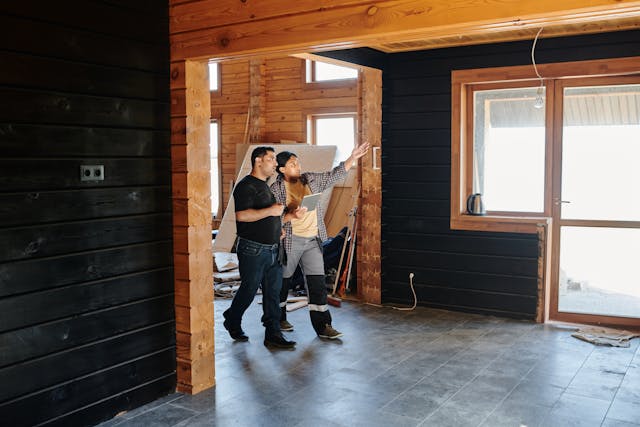Land development helps communities grow, but it can also harm nature. Eco-friendly land clearing methods reduce damage and support sustainability. Working with excavation contractors can solve site issues like drainage and moisture. These steps help protect soil, wildlife, and water while reducing waste and pollution.
Eco-conscious practices save resources and create healthier landscapes. For areas at risk of flooding or erosion, damp control experts can help with water management. Groups like the EPA recommend these practices as best for new projects. Choosing responsible land care offers safety, savings, and lasting benefits.
Forestry Mulching
Forestry mulching grinds trees, brush, and plants into mulch and spreads it back on the soil. Unlike burning or heavy clearing, this method feeds the soil, prevents erosion, and removes the need for hauling debris.
It is popular with sustainability advocates because it supports healthy ecosystems while clearing land quickly. Forestry mulching works well in places where erosion or drought is a risk. It helps soil hold water and keeps organic matter in place. If too much ground moisture or structural issues arise, damp specialists can add protection for long-term stability.
Selective Clearing
Selective clearing removes only unwanted plants while keeping healthy trees and native plants. This protects biodiversity and helps local wildlife. It also keeps soil stable and reduces erosion.
This method is useful in conservation areas or projects that care about both function and beauty. It works with each site’s natural shape and plant life, creating stronger ecosystems. It also protects wildlife corridors, nesting areas, and supports long-term land health.
Manual Clearing
Manual clearing uses hand tools like loppers, chainsaws, and saws instead of heavy machines. This is safer for wetlands, steep slopes, and sensitive sites. It lowers carbon emissions and gives better control when removing plants.
This method reduces soil damage, protects roots, and helps remove invasive species without harming the ecosystem. Many local groups support pairing manual clearing with sustainable upkeep for better results.
Controlled Burning
Controlled burning is an old method guided by fire experts. It clears brush, prevents larger wildfires, and returns nutrients to the soil. This encourages new plant growth and helps control pests and diseases.
When done safely by trained teams, it restores balance to ecosystems. Benefits include lowering wildfire risks, improving soil health, and bringing back native plants. Controlled burning is not used everywhere, but it remains a key tool in land care.
Rock Milling
Rock milling breaks down big rocks or boulders into gravel or soil material on-site. This cuts waste and lowers transport pollution. The crushed rock can be reused for paths, landscaping, or erosion control.
It is often cheaper than hauling rocks away and bringing new ones back. Rock milling reduces waste, supports recycling, and improves soil or ground strength by reusing what is already on-site.
Using Cover Crops
Cover crops like clover or rye grass protect soil from wind and rain. They stop erosion, add nutrients, and boost soil microbes. Their roots hold the soil, while the plants act like mulch to enrich the land.
This practice keeps topsoil in place, improves soil health, and adds organic matter. It also supports pollinators and wildlife, creating a stronger, healthier ecosystem.
Low-Impact Equipment Practices
Modern low-impact machines protect soil by using wide tracks and light designs. This keeps soil structure and root systems safe. It also reduces soil compaction and limits harm to underground life.
Using this equipment makes sites safer for people, wildlife, and future projects. It improves productivity while keeping land ready for farming, conservation, or development.
Strategic Planning and Assessment
Planning and assessment are key to eco-friendly land clearing. Working with experts like environmental consultants, biologists, and construction planners helps shape a plan that fits each property’s needs.
A full assessment points out protected areas, the best clearing methods, and the right timing. This lowers risks and improves results. Early planning also identifies ecological priorities, allowing for custom solutions that protect nature while adding long-term value for owners.
Using these steps helps both large and small projects meet their goals. It also shows care for the environment and ensures resources are preserved for the future.
Final Thoughts
Sustainable land clearing means balancing progress with care for nature. Methods such as forestry mulching, selective clearing, manual work, and controlled burning all reduce harm. Adding practices like rock milling, cover crops, low-impact machines, and good planning makes the process even stronger.
These choices prepare land for building or conservation without hurting the environment. They also support biodiversity, protect soil, and keep landscapes healthy for future generations.




